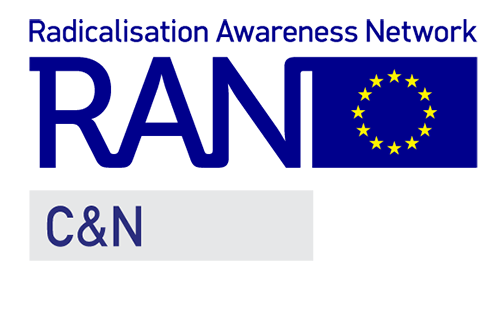
A crucial change is underway driven by new technological possibilities: reality (or at least the perception thereof) is becoming increasingly less stable, and potential for manipulation is on the rise (Kalpokas, 2021). As Kalpokas (2021) puts it: “While previously the media used to perform a somewhat supplementary role, building onto the ‘real’ world and conveying or explaining it, with varying degrees of fidelity, the current and near future condition is characterized by the media hosting and creating the world that they intend to merely represent”. Technology now affords increasingly sophisticated ways to produce a ‘synthetic’ reality, with the clearest example being deep fakes.
For the RAN Practitioners C&N Working Group meeting on ‘What’s going on online: Dealing with (potential) use of deep fake technology by extremists and disinformation actors’ we are looking for first-line practitioners and (academic) experts who are interested in attending.
Please note this is a face-to-face event taking place in Helsinki, Finland and requires travel. Your travel will be arranged by RAN but do keep in mind that it will take up more time agenda-wise than the digital meetings we got used to in the last 2 years. By registering, you confirm your availability and willingness to travel for this meeting.
Target group
For this meeting we are looking for:
- Practitioners from the C&N constituency who are experienced in dealing with disinformation, promoting media literacy, counter- and alternative narrative campaigns and communications.
- Experts on deep fake technology, synthetic media, technological developments in online communications, identifying deep fake content.
- Experts from (big) tech and social media companies who have experience in dealing with deep fake or other synthetic media content.
Topic of the meeting
We are increasingly living in a ‘post-truth’ world, where facts matter less, and public truth claims are disputed. Fake news, mis- and disinformation and conspiracy narratives are easily spread online, consciously and unconsciously. This also poses a challenge for P/CVE practitioners: extremist ideologies and the conspiracy narratives that underly them are also easily spread online and taken as truth – or even blurring the boundaries between fake and truth. Even though not all instances of fake news or media manipulation have extremist ideologies and conspiracy narratives underlying them, extremists can capitalise on this post-truth environment. This raises the overarching question: how can P/CVE practitioners navigate this post-truth world? This is especially relevant in work with young people who grow up in a world where they are constantly online, but also in political education, media literacy for professionals and other types of P/CVE work.
Technological advancements in online communications will affect the post-truth world even further. ‘Synthetic media’, which is the creation or modification of media by artificial intelligence (AI), is such a technological development. The most well-known synthetic media are deep fake video or audio fragments. Deep fake content can be used to spread disinformation, hateful content, and extremist narratives. For example, it has already been used in the Russian war of aggression against Ukraine to spread fake news. Moreover, it can also be used for recruitment purposes by extremist groups.
While there is little evidence that this technology is currently already used by extremists on a significant scale, deep fake technology is seen as a security risk by major authorities (i.e. Europol Innovation Lab 2022). It is becoming easier and cheaper to create deep fake content, while at the same time it is increasingly difficult to identify deep fake content as the technology is improving. Considering the (future) potential of extremist groups abusing deep fake technology to spread their narratives and radicalise individuals, the RAN C&N working group will discuss the topic of deep fake technology, its possible consequences for extremism and how to deal with the (potential) use of it by extremists.
The goal of this meeting is to discuss the current state of this type of technology and the expectations for the near future, ways to spot and counter deep fake content, how to incorporate this in P/CVE work (for example in media literacy training), but also to discuss the overarching question of what P/CVE work in a post-truth world should look like.
Background information
This meeting builds upon the needs expressed by participants of the RAN C&N working group meeting on ‘Digital Frontrunners in P/CVE’ (16 & 17 June 2022, Riga, Latvia), among which the need to keep up with current trends and developments in online P/CVE and discuss its implications.
Some background information on the topic of deepfakes can be found in the following external sources:
- Europol Innovation Lab (2022) ‘Facing reality? Law enforcement and the challenge of deepfakes’.
- UNICRI & UNCCT (2021) ‘Algorithms and Terrorism: The Malicious Use of Artificial Intelligence for Terrorist Purposes’.
- Rathenau Institute (2022) blog: ‘How to regulate manipulative AI?’.
Relevant questions:
- What is deep fake content, what is the technology behind it, and what what can we expect from it in the near future?
- How is deep fake tech currently being used? What are the (potential) risks of deep fake technology and other forms of synthetic media being used by extremists?
- How can deep fake content be identified? Can it be countered, and if so, how?
- What can we expect from deep fake tech developments in the future (i.e., next 3-5 years)?
- How can P/CVE practitioners (especially those working with counter- and alternative narratives, media literacy, etc.) navigate a post-truth world where it is impossible to distinguish (deep) fake content from real?
Deadline and practical information
If you are interested in participating in this meeting, please answer the questions in the following registration form.
Deadline: Please fill in the form no later than Thursday 6 October EOB.
We will invite participants (and contributors) based on the answers given in the survey and the order of registration.
Sources
Details
- Publication date
- 13 September 2022
- Author
- Directorate-General for Migration and Home Affairs
- Location
- Helsinki
